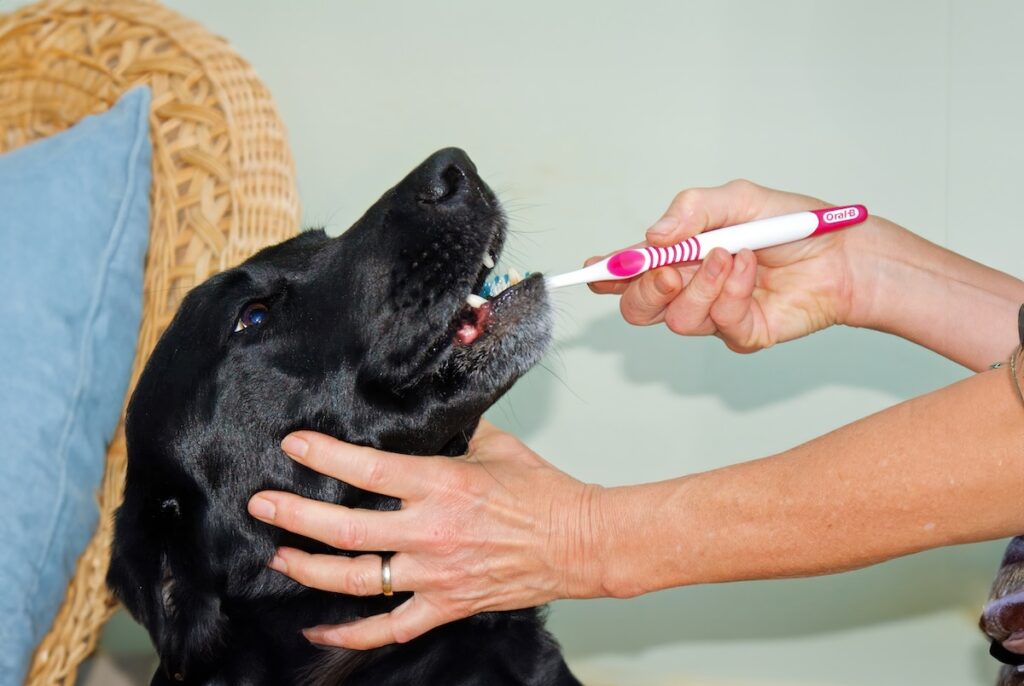Brushing Your Dog’s Teeth: 6 Easy Steps
 Copyright Caroline Clark
Copyright Caroline ClarkDid you know 80% of dogs over the age of three experience gum disease? Gum disease begins when bacteria sticks to the surface of teeth. It forms a whitish sticky layer called dental plaque. If this layer is left, it hardens to form a brown rough deposit on the teeth called tartar.
The bacteria within the plaque and tartar attack the gums and inflames the gum tissue. This causes discomfort and in time can lead to your dog losing teeth.
How your vet can help
It’s not always easy for owners to spot gum disease, so take your dog to the vet to have an oral check-up. If there is a heavy build-up of tartar your dog may need their teeth scaling and polishing under general anaesthesia. At the same time each tooth can be assessed properly.
Alternatively your vet may recommend a daily dental chew with the right shape and texture to help reduce tartar build-up. You may be advised to put your dog on a special diet that may help reduce tartar build-up. However the vet may simply tell you to start an effective dental home care routine.
How to brush your dog’s teeth
What you will need:
- Dog toothpaste, available from your vet. Don’t use human brands as these can cause stomach upsets in dogs.
- Disposable gloves to wear as a health and safety measure.
- A pet toothbrush with medium bristles. You can buy these from your vet.
- A quiet area with few distractions.
- Patience!
Six steps to brushing your dog’s teeth
- Wash your hands and put on the gloves. Smear a small amount of toothpaste onto your index finger and allow the dog to lick off the toothpaste. Repeat several times and give lots of praise.
- Smear the index finger with toothpaste and gently rub the finger over the outer surface of your dog’s teeth and gums.
Only go as far into the mouth as your dog is happy with. Repeat several times over the space of a few days. If your dog shows any aggression do not proceed further but speak to your behaviourist for advice. - Wet the toothbrush with water and smear with toothpaste.
Let the dog lick some of the toothpaste from it to get used to it before inserting into the mouth. Hold the dog gently over the muzzle and lift the lip. Praise him for allowing you to do this and repeat the process as before. - Brush the canines (the large pointed ones). Brush gently from the gum line to the tip of the tooth. Avoid brushing other teeth at this stage and give lots of praise.
- Repeat step 3 but now introduce the brush to the teeth behind the canines using a circular motion. Only go as far as your dog is comfortable with.
- Repeat previous steps but now brush the front teeth (incisors) gently up and down. Some dogs find this area sensitive and can sneeze so be careful. Concentrate on the outer surface of the teeth as this is the side that’s usually most affected. For maximum benefit brush at least every other day.
Remember:
- Keep sessions short
- Repeat each stage slowly and give lots of praise
- Do not move onto the next stage until your dog is happily accepting each stage of training.
- Take your time. It will take at least a week of training to complete the whole process.